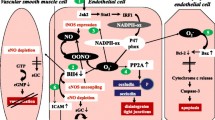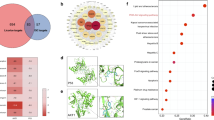Abstract
Ischemia-reperfusion injury causes oxidative stress producing reactive oxygen species, which is a serious problem linked to morbidity and mortality in liver surgery. We investigated the effects of edaravone, a new free radical scavenger, on liver oxidative stress in vitro and in vivo. We employed a hypoxiareoxygenation model of primary cultured hepatocytes using an AnaeroPack (Mitsubishi Gas Chemical Co., Tokyo, Japan). Hepatocytes were exposed to 3 or 4 hours of hypoxia and then returned to oxygenation. We analyzed the time course changes of aspartate aminotransferase (AST), phosphatidylcholine hydroperoxide (PCOOH), and adenosine triphosphate (ATP) content in hepatocytes of edaravone-treated groups or nontreated groups after reoxygenation. Edaravone significantly attenuated the elevation of the AST level of the medium and hepatocellular PCOOH and preserved the hepatocellular ATP level. In vivo, male Sprague-Dawley rats were subjected to 45 minutes of hepatic ischemia and 120 minutes of reperfusion. The rats were intravenously injected with vehicle or edaravone (3 mg/kg or 10 mg/kg) before reperfusion and 1 hour after reperfusion. Serum AST levels and hepatic PCOOH and energy charge were significantly improved in both edaravone groups compared with control. In conclusion, edaravone has the ability to eliminate intra-hepatocellular superoxide species and attenuate oxidative liver damage in liver surgery.
Similar content being viewed by others
References
Huguet C, Nordlinger B, Bloch P, Conard J. Tolerance of the human liver to prolonged normothermic ischemia. A biological study of 20 patients submitted to extensive hepatectomy. Arch Surg 1978;113:1448–1451.
Atalla SL, Toledo-Pereyra LH, MacKenzie GH, Cederna JP. Infiuence of oxygen-derived free radical scavengers on ischemic livers. Transplantation 1985;40:584–590.
Watanabe K, Watanabe K, Hayase T. Radical scavenging mechanism of MCI-186. Jpn Pharmacol Ther 1997;25:s1699-s1707.
Watanabe T, Yuki S, Saito K, Sato S, Sugimoto J, Ohori Y. Pharmacological studies of MCI-186, a new drug for acute stroke. Jpn Pharmacol Ther 1997;25:s1691-s1698.
Abe K, Yuki S, Kogure K. Strong attenuation of ischemic and postischemic brain edema in rats by a novel free radical scavenger. Stroke 1988;19:480–485.
Nishi H, Watanabe T, Sakurai H, Yuki S, Ishibashi A. Effect of MCI-186 on brain edema in rats. Stroke 1989;20:1236–1240.
Watanabe T, Yuki S, Egawa M, Nishi H. Protective effects of MCI-186 on cerebral ischemia: possible involvement of free radical scavenging and antioxidant actions. J Pharmacol Exp Ther 1994;268:1597–1604.
Minhaz U, Tanaka M, Tsukamoto H, Watanabe K, Koide S, Shohtsu A, Nakazawa H. Effect of MCI-186 on postischemic reperfusion injury in isolated rat heart. Free Radic Res 1996;24:361–367.
Wu TW, Zeng LH, Wu J, Fung KP. Myocardial protection of MCI-186 in rabbit ischemia-reperfusion. Life Sci 2002;71:2249–2255.
Mitsumori K, Sakuragi M, Kitami K, Koyanagi I, Murata J. The effect of MCI-186 on regional cerebral blood.ow in patients with acute cerebral infarction. Therap Res 1998;19:1333–1345.
Jaeschke H, Farhood A, Smith CW. Neutrophils contribute to ischemia/reperfusion injury in rat liver in vivo. Faseb J 1990;4:3355–3359.
Tamura M, Nakajima Y, Omura T, Ito K, Kimura J, Kusumoto K, Isai H, Uchino J, Nakane A, Minagawa T. Can anti-Mac-1 and anti-TNF monoclonal antibody protect the liver from warm ischemia-reperfusion injury in mice? Transplant Proc 1995;27:768–770.
Nakano H, Kuzume M, Namatame K, Yamaguchi M, Kumada K. Efficacy of intraportal injection of anti-ICAM-1 monoclonal antibody against liver cell injury following warm ischemia in the rat. Am J Surg 1995;170:64–66.
Oshiro Y, Marubayashi S, Maeda T, Asahara T, Fukuda Y, Yamada K, Koyama S, Ito H, Miyasaka M, Dohi K. Contribution of neutrophils and effect of monoclonal antibodies to adhesion molecules on ischemia and reperfusion injury in rat livers. Transplant Proc 1995;27:743–744.
Vollmar B, Glasz J, Menger MD, Messmer K. Leukocytes contribute to hepatic ischemia/reperfusion injury via intercellular adhesion molecule-1-mediated venular adherence. Surgery 1995;117:195–200.
Jaeschke H. Mechanisms of reperfusion injury after warm ischemia of the liver. J Hepatobiliary Pancreat Surg 1998;5:402–408.
Suzuki M, Takeuchi H, Kakita T, Unno M, Katayose Y, Matsuno S. The involvement of the intracellular superoxide production system in hepatic ischemia-reperfusion injury. In vivo and in vitro experiments using transgenic mice manifesting excessive CuZn-SOD activity. Free Radic Biol Med 2000; 29:756–763.
Kakita T, Suzuki M, Takeuchi H, Unno M, Matsuno S. Significance of xanthine oxidase in the production of intracellular oxygen radicals in an in-vitro hypoxia-reoxygenation model. J Hepatobiliary Pancreat Surg 2002;9:249–255.
Ninomiya M, Shimada M, Harada N, Shiotani S, Hiroshige S, Soejima Y, Suehiro T, Sugimachi K. Beneficial effect of MCI-186 on hepatic warm ischemia-reperfusion in the rat. Transplantation 2002;74:1470–1472.
Okatani Y, Wakatsuki A, Enzan H, Miyahara Y. Edaravone protects against ischemia/reperfusion-induced oxidative damage to mitochondria in rat liver. Eur J Pharmacol 2003;465:163–170.
Seglen PO. Preparation of isolated rat liver cells. Methods Cell Biol 1976;13:29–83.
Kamiya T, Kwon AH, Kanemaki T, Matsui Y, Uetsuji S, Okumura T, Kamiyama Y. A simplified model of hypoxic injury in primary cultured rat hepatocytes. In Vitro Cell Dev Biol Anim 1998;34:131–137.
Miyazawa T, Yasuda K, Fujimoto K. Chemiluminescencehigh performance liquid chromatography of phosphatidylcholine hydroperoxide. Anal Lett 1987;20:915–925.
Atkinson DE. The energy charge of the adenylate pool as a regulatory parameter. Interaction with feedback modifiers. Biochemistry 1968;7:4030–4034.
Author information
Authors and Affiliations
Corresponding author
Additional information
This work was supported in part by research grants from the Ministry of Education, Science, and Culture of Japan and the Yamanouchi Foundation.
Rights and permissions
About this article
Cite this article
Abe, T., Unno, M., Takeuchi, H. et al. A new free radical scavenger, edaravone, ameliorates oxidative liver damage due to ischemia-reperfusion in vitro and in vivo. J Gastrointest Surg 8, 604–615 (2004). https://doi.org/10.1016/j.gassur.2004.02.011
Issue Date:
DOI: https://doi.org/10.1016/j.gassur.2004.02.011




